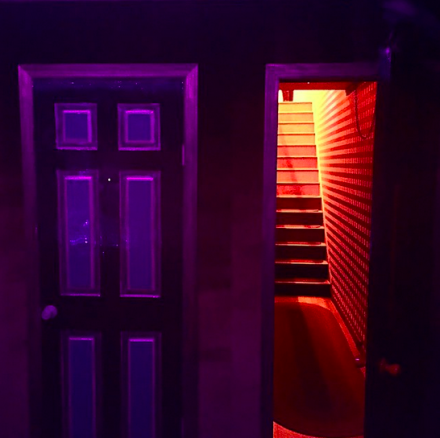
Alex Da Corte, Die Hexe (Installation View), via Art Observed
For the past month and a half, the 77th Street location of Luxembourg and Dayan’s townhouse location has served as a bizarre cross between retro kitsch and haunted house, part of artist Alex Da Corte’s solo exhibition at the space.
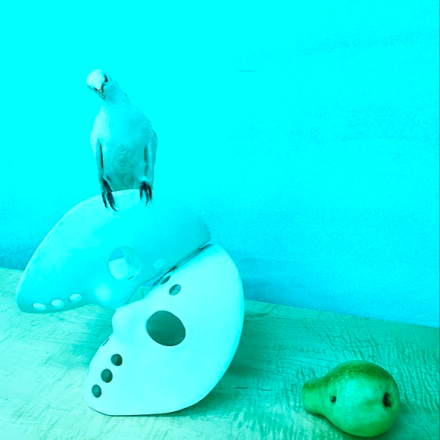
Alex Da Corte, Die Hexe (Installation View), via Art Observed
The Philadelphia-based artist definitely wears his influences on his sleeve here. Frequent allusions to the domestic banality and subtle inversions of identity that populated the work of Mike Kelley and Robert Gober abound (on the ground floor, a peephole looks in on one of Gober’s signature drains, surrounded by an seemingly infinite series of mirrors and lights) in the form of immersive, full-room tableaus that mix soft lighting, ghostly mechanical objects and dated decor to create a somber, yet subtly comical environment.
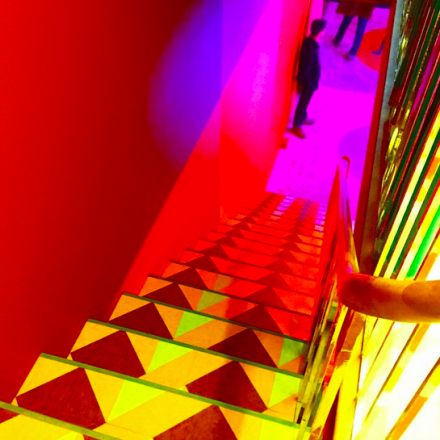
Alex Da Corte, Die Hexe (Installation View), via Art Observed
Yet for Da Corte, the force of his subject matter seems to be more cohesively shored up within the environments he selects, removing some of the more ambiguously sexual undercurrents of the aforementioned artists, and replacing them with a vigorous, often much more blatant sexuality. His take on Kelley’s Lumpenprole mounts a stuffed panther atop the late artist’s previously ominous mounds of material, while down the hall, a recreation of an Allen Jones’s Table is topped with a series of delicate glass figurines, played off against a stripper pole and a pair of comically placed neons.
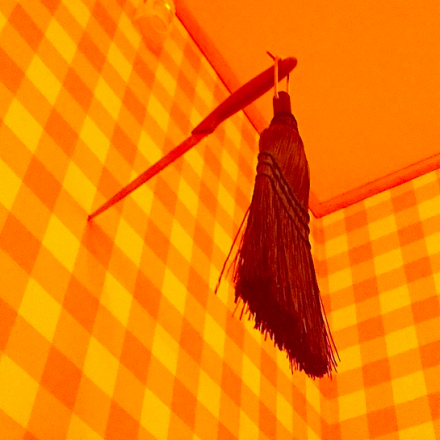
Alex Da Corte, Die Hexe (Installation View), via Art Observed
Da Corte is a master of seamless integration, and his exhibition rewards a lingering engagement with the reoccurring visual tropes he slides into the work. His emphasis on witchcraft, and the hokey mysticism embraced by pop culture is embodied throughout with the hysterical inclusion of Swiffer brooms, a modern take on the classic witch’s vehicle, but robbed of any eerie atmosphere or distinct cultural backdrop.
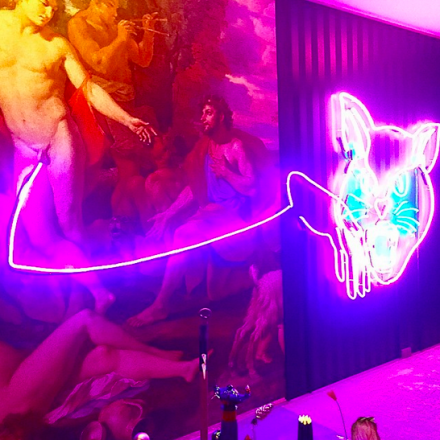
Alex Da Corte, Die Hexe (Installation View), via Art Observed
It’s perhaps this attention to detail that makes the exhibition so compelling and historically resonant. Whereas his forerunners use the domestic as a site to explore explicit trauma and the foreces of socialization, Da Corte seems to see them as a site for a sort of degraded escapism. His materials and their combinations do little to escape their mundane moorings, yet at the same time, their clear indication of more fantastic climes makes for an exchange that alternates between the frightening and the comical. This is perhaps nowhere better seen than at the top floor, where a morgue full of mirrors, teal accents and a lone Swiffer complement an open drawer full of what seems to be green Jell-O. The exhibition retains an air of 1960’s nostalgia that seems to be swiftly fading into the past, drawn in part from the gallery location’s former role as a temporary home for the Mamas and the Papas while writing and recording in New York. Preserved here, Da Corte seems willing to allow the fantastic realms of childhood, the site’s historical moorings and his own aesthetic leanings to bleed into early memories of now deceased space.
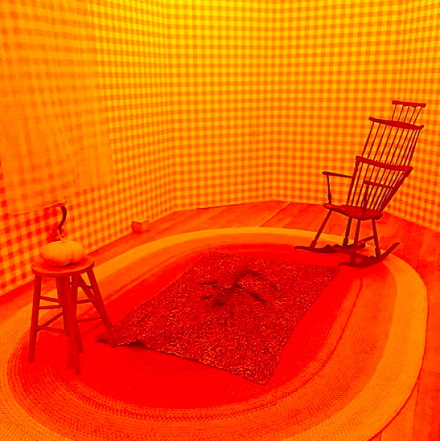
Alex Da Corte, Die Hexe (Installation View), via Art Observed
Da Corte’s installation could, in one perspective, best be described as the place where aesthetics go to die. Exploring the modern fascinations with pop culture, modern style and the occult as the flip-side to the mundane environs that spawn them, Die Hexe seems to enjoy the messiness that results when these supposedly timeless constructs begin to fade with age.
Die Hexe is on view until April 11th.
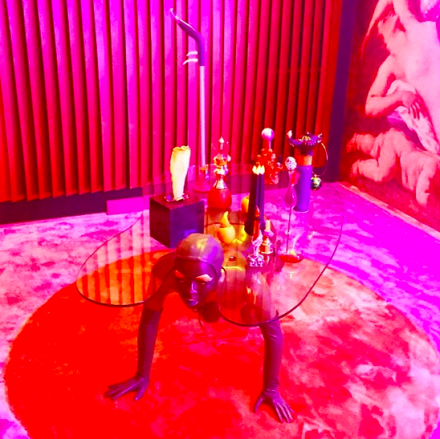
Alex Da Corte, Die Hexe (Installation View), via Art Observed
— D. Creahan
Read more:
Alex Da Corte: Die Hexe [Exhibition Site]
“Alex Da Corte: ‘Die Hexe’” [New York Times]



